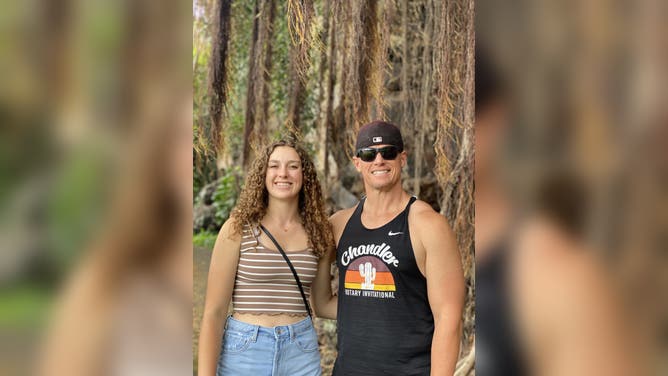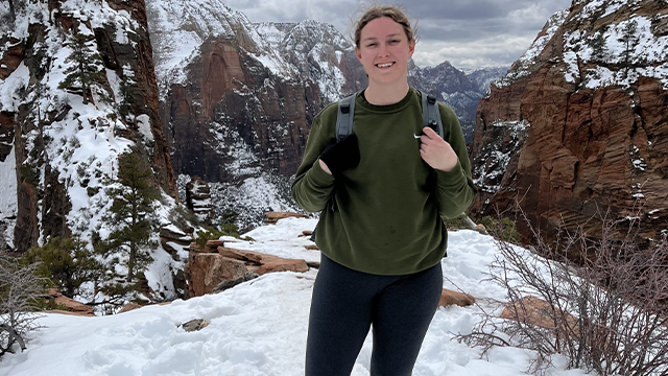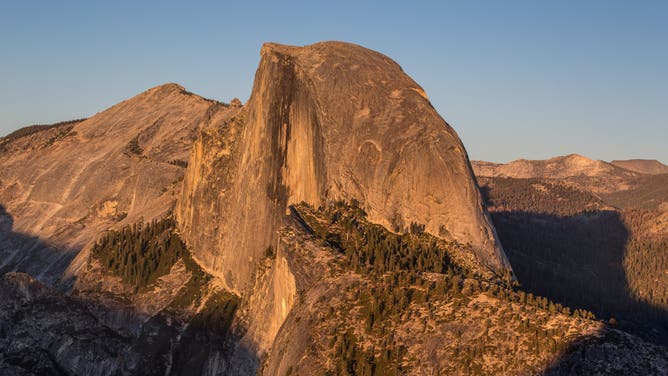Daughter dies in fall at Yosemite's Half Dome amid powerful storm while hiking with father: 'Sheer terror'
Grace Rohloff was hiking with her father, Jonathan, atop Half Dome inside Yosemite National Park on July 13 when a thunderstorm moved in and she slipped and fell about 250 feet.
Arizona college student falls to her death at Yosemite's Half Dome in front of horrified father
A bucket list hike atop Yosemite’s Half Dome turned deadly for a 20-year-old Arizona State University student when she slipped and fell during a powerful thunderstorm while her father watched. FOX 10 Phoenix Reporter Lindsey Ragas has the report.
YOSEMITE NATIONAL PARK, Calif. - A bucket list hike atop Yosemite National Park's iconic Half Dome turned deadly for a 20-year-old Arizona State University student after a powerful thunderstorm moved in, causing her to lose her footing and fall 250 feet to her death in front of her horrified father.
Jonathan Rohloff spoke with FOX 10 in Phoenix and said his daughter, Grace, had many goals in life. She was following in her parent’s footsteps and wanted to become a teacher.
TOP 10 NATIONAL PARKS IN 2024, ACCORDING TO TRAVEL AND LEISURE

This photo shows Grace and Jonathan Rohloff.
(Jonathan Rohloff / FOX 10)
He said his world had been turned upside down after losing his daughter, who loved to be active, loved hiking and was always looking for the next adventure.
"It’s hard waking up each morning, knowing Grace isn’t here," he told FOX 10 Phoenix Reporter Lindsey Ragas.
Rohloff said that Grace has bonded with him over their love of hiking ever since she was a little girl.
"She used to come in the backpack along with me, and she was more interested in snacks at that point in time," he said.
HERE ARE THE 10 TOP DEADLIEST NATIONAL PARKS, ACCORDING TO RESEARCH

This photo shows Grace Rohloff.
(Jonathan Rohloff / FOX 10)
And her passion for hiking and being outdoors grew as Grace got older.
By the time she was 13, Jonathan said Grace had hiked the full Bright Angel Trail at the Grand Canyon.
And most recently, Grace had been selected to hike Half Dome, a mountain located within California’s iconic Yosemite National Park.
"She was texting me Thursday night, ‘Dad, we got drawn. I’m so excited. Can’t wait to go. We did it. We finally get to go and do this,’" Rohloff said.
The father-daughter duo set off on the 10-mile hike on July 13 and reached the top of Half Dome with clear skies.

This photo shows Grace and Jonathan Rohloff.
(Jonathan Rohloff / FOX 10)
"She was at the top," Jonathan said. "She shared with me that she loved me and how she was so grateful to do that with me."
That’s when the joyous moment turned into grief and horror.
"It wasn’t long where we heard that thunderclap," he said. "And so we knew. I was like, ‘Grace, we got to get down the mountain. We don’t want any rain."
The storm began to intensify over Half Dome, and the torrential rain made the granite slick and dangerous. On her way down the mountain, Grace slipped on the Half Dome cables and fell.
7 FACTS ABOUT US NATIONAL PARKS

This photo shows Grace Rohloff.
(Jonathan Rohloff / FOX 10)
"It was just sheer terror," Jonathan said. "And I was telling her, ‘Stop, stop stop,’ because you see your daughter start to fall, and you hope that, like, anything that she can stop on, anything versus going down."
It’s estimated that Grace fell 250 feet down the mountain.
"I thought I might be able to help her," he said. "So, I just flew down the cables. I threw a little caution to the wind, looking back on it, to try and get to her. I couldn’t make it down to her, but I continued to yell out to her and let her know, ‘Hey. I’m here. I love you. Hear my voice. I’m not going to leave you.’"
Jonathan said he was sharing Grace’s story not only to keep her memory alive, but also to advocate for a safer cable system at Half Dome.
7 WEATHER EXTREMES EXPERIENCED AT NATIONAL PARKS

YOSEMITE VALLEY, CA - OCTOBER 05: The iconic Half Dome is viewed from Glacier Point at sunset on October 5, 2019, in Yosemite National Park, California. With the arrival of fall, the tens of thousands of monthly visitors begins to drop off but the usual weekend traffic congestion and on-going road construction projects continue to provide challenges for getting around in the Park. (Photo by George Rose/Getty Images)
(Getty Images)
According to Yosemite.com, permits are required to hike the cables at Half Dome whenever they are "up," which is usually between the Friday before Memorial Day and the second Monday in October, depending on weather conditions.
When they are "up," the cables are fixed to Half Dome with supportive posts that hold them up. A board on the ground between each post is designed to provide some traction and a place to stop and rest if needed.
According to the website, most hikers have to take one or two steps on the granite to get from one board to the next and use their grip on the metal cable to stay in place as they move up or down the mountain.
The metal cables have been on the mountain since 1919, and the National Park Service said "relatively few people have fallen and died on the cables."
